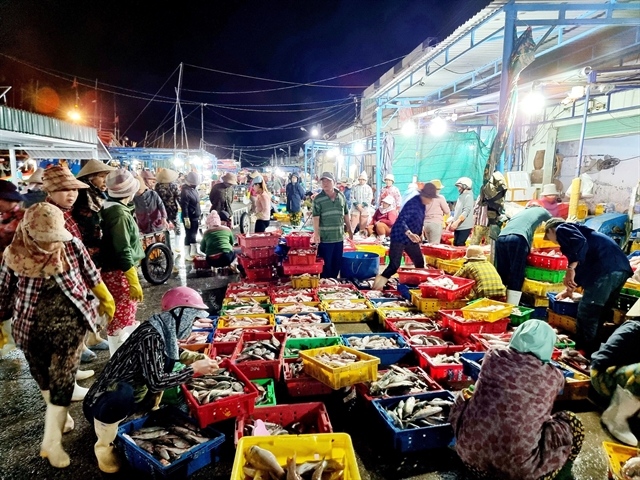 Economy
Economy

 |
| Đông Hải fishing port in Khánh Hoà Province. Many Vietnamese exporters with strong footholds overseas found it difficult to compete at home because their products which meet export standards often cost more than 20 per cent above local alternatives. — VNA/VNS Photo Nguyễn Thành |
HÀ NỘI — Việt Nam’s seafood industry is casting its net closer to home after decades of chasing export markets. Rising trade barriers and falling global demand have prompted companies to reel in new growth from the domestic market.
Though Việt Nam’s seafood is found on tables in more than 170 countries and meets the world’s toughest quality standards, it has struggled to hook the attention of its own 100 million-strong population.
Statistics from the Ministry of Industry and Trade show the domestic seafood market is valued at around US$1 billion, yet imports still make up 40 per cent of consumption.
With annual seafood consumption at 35-38 kg per person, Việt Nam is seen as a “forgotten gold mine,” according to the Việt Nam Seafood Exporters and Producers (VASEP), as exporters have long focused on overseas markets, leaving local demand largely untapped.
However, things are changing. Global headwinds, including rising trade barriers and shrinking demand, are forcing exporters to seek growth in the home market, where a rising middle class is driving demand for high-quality products.
VASEP Deputy General Secretary Tô Tường Lan said seafood exports are expected to reach US$10 billion this year, a year-on-year increase of 10 per cent, which is considered a positive result amid global trade uncertainties.
However, pressure on seafood exports is intensifying, including US tariffs and the impact of the Marine Mammal Protection Act (MMPA), which the US says Việt Nam has yet to fully align with in 12 fisheries, anti-dumping and countervailing duties on shrimp, and the EU’s yellow card for illegal, unreported and unregulated (IUU) fishing.
Tapping the domestic market is not easy.
Many Vietnamese exporters with strong footholds overseas find it difficult to compete at home because their products, which meet export standards, often cost more than 20 per cent above local alternatives, especially in traditional wet markets.
Lan pointed out that consumer awareness of food safety remains limited while the market is price-sensitive, adding that buyers often prioritise low prices over quality.
In addition, the domestic distribution network is completely different from traditional export models, she added.
According to VASEP, the domestic supply chain operates differently, meaning companies must adopt different strategies to expand in the domestic market.
VASEP has launched a domestic market club with about 30 members. However, most face difficulties in the domestic market, including weak branding and limited communication strategies, with overreliance on traditional distribution channels.
Only 20-25 per cent of seafood companies are using e-commerce to promote sales domestically.
The lack of data on consumer buying behaviour also makes it difficult for companies to connect effectively with domestic distribution networks.
The biggest obstacle, however, is consumer habits, with VASEP pointing out that people are used to fresh seafood.
Unlocking market potential
To gain a foothold at home, seafood companies need a clear strategy built on market research and product development, expanding distribution networks with stronger use of digital tools, VASEP said.
The association said companies should focus on major urban markets such as Hà Nội, HCM City, Đà Nẵng and Cần Thơ, as well as industrial zones and middle- to high-income residential areas.
Key target groups include young families seeking convenient, easy-to-cook products available online, office workers with ready-made meal combos, and hotels and restaurants.
The domestic strategy must focus on branding and traceability. While cheaper products remain popular, an increasing number of consumers are willing to pay for high-quality products with a clear story and transparent origin.
The Government has tasked the Ministry of Industry and Trade with developing a project to stimulate domestic consumption, focusing on boosting the share of Vietnamese goods, including seafood products, in retail and distribution channels. — VNS




